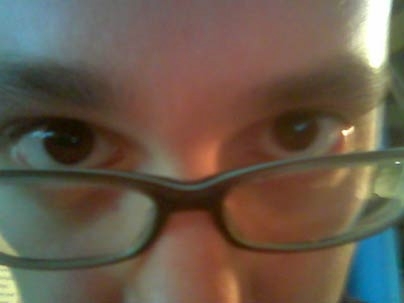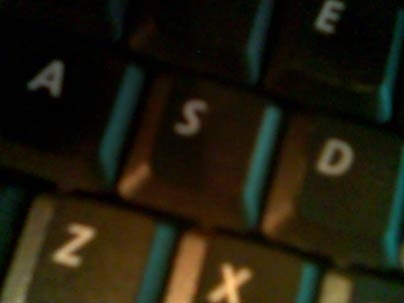Someday, perhaps, a Pulitzer Prize committee will add a category for cell-phone photographs. But for now, photographer and new media artist Gary Duehr has a message for would-be digital shutterbugs: Accept the medium for what it is. And what it is may seem awful.
Yet those same blurry images, grainy, muted colors, goofy, off-kilter shots of friends, family or strangers on the street that make cell-phone photos so terrible are also what make them so great, Duehr insists.
"Open yourself to the world of really crappy cell-phone photos," Duehr told a group of about 10 people at the Compton Gallery as part of the (paradoxically titled) Independent Activities Period workshop "Take Better Pictures With Your Cell Phone (And Win Big)." "I want you to appreciate the virtue of taking really bad pictures with cell phones."
Indeed, Duehr quickly gave participants assignments. Soon the participants were capturing close-ups ranging from wires on the ground to a jacket thrown over a chair to shadows on the wall. They snapped the faces of passersby in Building 10. They did self-portraits at arm's length.
And, despite a few technical hurdles and glitches, they practiced e-mailing or downloading photos to computers, processing images with Photoshop and printing them.
But on the road to bad, something good happened. Wonderful images emerged on plain paper: intriguing landscapes of light and dark, moody portraits of people and captivating patterns.
Duehr, whose work has been featured in numerous galleries, was delighted. So was Jon Bijur, who has helped organize the Mili-MIT Museum Cell Phone Photography Contest, the museum's first cell-phone photo contest, which is being held this month. (That's the "winning big" part of the IAP workshop title.) "The goal is to have as many people enter as possible," said Bijur, the museum's educational service coordinator.
Duehr, an award-winning artist and manager of the Broomfield Art Gallery, is himself new to the cell-phone medium. Â In February he started taking photos with his cell phone and "I've loved it," he told workshop participants.
He specializes, for example, into taking pictures of pictures. He has enlarged his photos until the subjects were almost unrecognizable but "I thought they got really interesting." He remains fascinated with the peculiar quality of photos that contain "just enough pixels to tell what's there." He doesn't hold back from the shutter trigger: "I tend to take (photos) like candy."
The ubiquity of cell phones--most with cameras--has turned many callers into would-be snap-shooters. Electrical engineering junior Gabriel Lopez was asked directions to the cell-phone workshop, then thought, "Oh, cool," and decided to participate himself. Â Â
Retired University of Massachusetts professor of mechanical engineering Turgay Erturk wanted to explore the possibilities of a recent phone purchase; he captured an evocative portrait of a student eating alone. "This is a good learning process," he declared. John MacNeil, a graduate student in technical policy, wanted to learn how to manipulate colors and found a dynamic landscape in the folds of a vacuum cleaner bag. "This is my only camera," he explained.
For others, the new medium has enhanced, not replaced, the old one. Fourteen-year-old Emily Whitlow, whose mother works at MIT, also loves shooting photos with her Nikon film camera. "I like black and white," she said.
Duehr also discussed legal aspects of cell-phone photos, including recent court cases about publishing photos taken in public places. Yet cell-phone photos have an aura of the forbidden: "There's a secret quality about them," he said. They make the private public; the phone camera video of the Saddam Hussein hanging is one example.
Raju Patel, co-director of the Massachusetts Space Grant Program, hopes to master enough skills to snap web-site quality photos. After all, she may not always carry a camera, "but I always have my cell phone."
The Mili-MIT Museum Cell Phone Contest is open to the MIT community through Jan. 29. Prizes include photo printers and gift certificates; an award ceremony will be held Feb. 2. For information, go to: poq.csail.mit.edu:3333/.
"Take Better Pictures With Your Cell Phone" will be repeated Jan. 19 and 26 from 2 to 4 p.m. in the Compton Gallery. Duehr's work can be seen at www.garyduehr.com.
A version of this article appeared in MIT Tech Talk on January 24, 2007 (download PDF).







